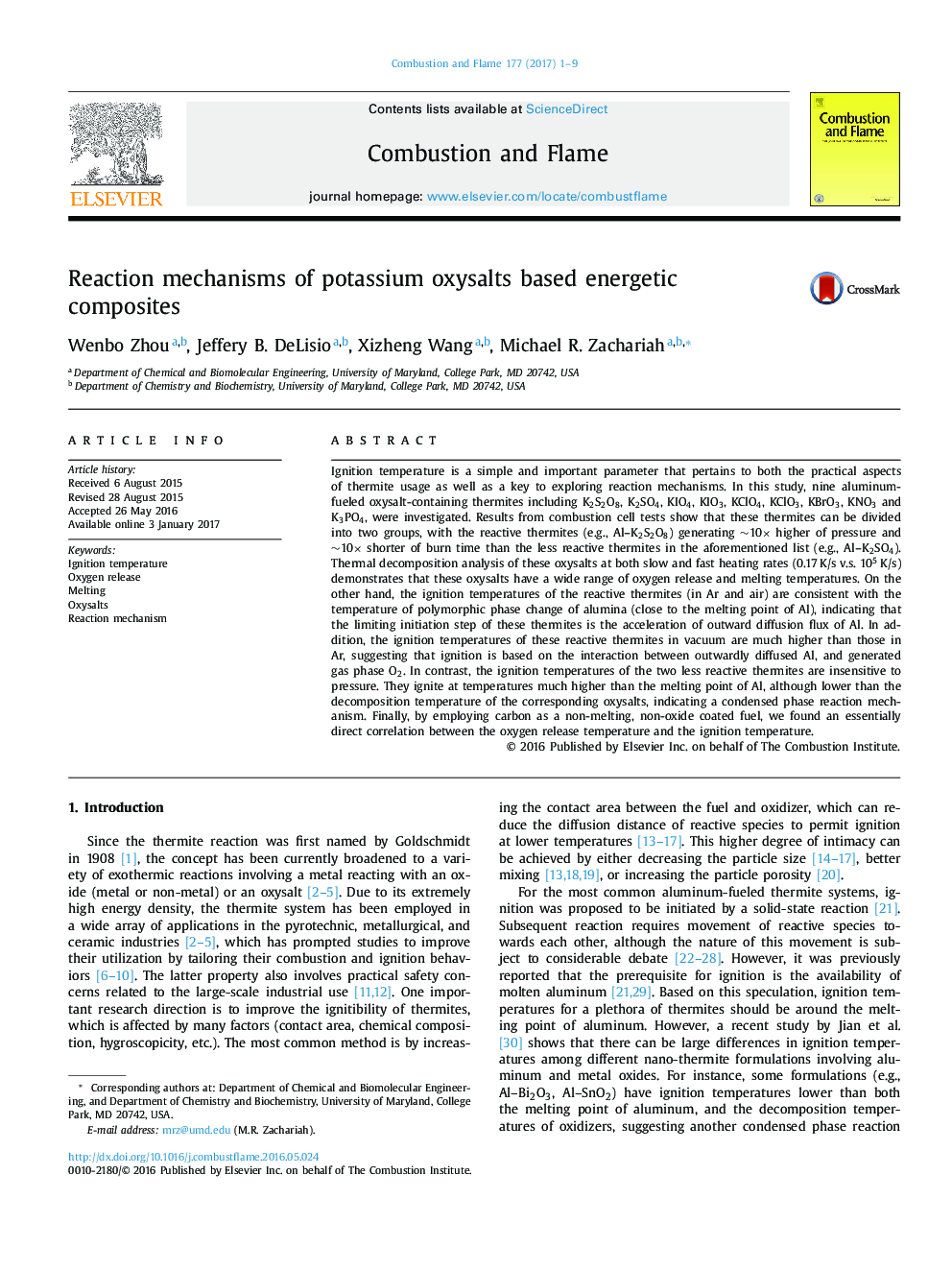| کد مقاله | کد نشریه | سال انتشار | مقاله انگلیسی | نسخه تمام متن |
|---|---|---|---|---|
| 6468527 | 1423560 | 2017 | 9 صفحه PDF | دانلود رایگان |
Ignition temperature is a simple and important parameter that pertains to both the practical aspects of thermite usage as well as a key to exploring reaction mechanisms. In this study, nine aluminum-fueled oxysalt-containing thermites including K2S2O8, K2SO4, KIO4, KIO3, KClO4, KClO3, KBrO3, KNO3 and K3PO4, were investigated. Results from combustion cell tests show that these thermites can be divided into two groups, with the reactive thermites (e.g., Al–K2S2O8) generating ∼10× higher of pressure and ∼10× shorter of burn time than the less reactive thermites in the aforementioned list (e.g., Al–K2SO4). Thermal decomposition analysis of these oxysalts at both slow and fast heating rates (0.17 K/s v.s. 105 K/s) demonstrates that these oxysalts have a wide range of oxygen release and melting temperatures. On the other hand, the ignition temperatures of the reactive thermites (in Ar and air) are consistent with the temperature of polymorphic phase change of alumina (close to the melting point of Al), indicating that the limiting initiation step of these thermites is the acceleration of outward diffusion flux of Al. In addition, the ignition temperatures of these reactive thermites in vacuum are much higher than those in Ar, suggesting that ignition is based on the interaction between outwardly diffused Al, and generated gas phase O2. In contrast, the ignition temperatures of the two less reactive thermites are insensitive to pressure. They ignite at temperatures much higher than the melting point of Al, although lower than the decomposition temperature of the corresponding oxysalts, indicating a condensed phase reaction mechanism. Finally, by employing carbon as a non-melting, non-oxide coated fuel, we found an essentially direct correlation between the oxygen release temperature and the ignition temperature.
Journal: Combustion and Flame - Volume 177, March 2017, Pages 1–9
